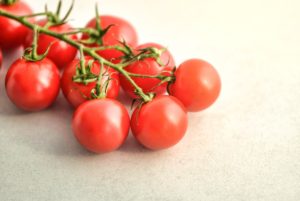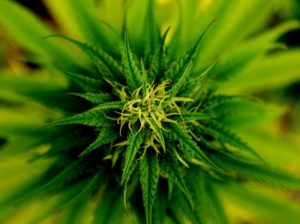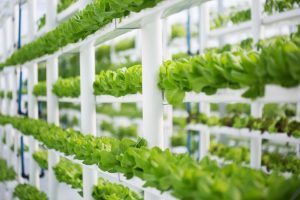What are hydroponic tanks?
Hydroponic tanks, also called reservoirs, are where you store your nutrient solution. This handy container may also be called a nutrient reservoir. This mixture of water and nutrients is what feeds hydroponic plants. Nutrient solution moves from the hydroponic tank, and into the rest of your system, where it reaches your plants. It’s much more than a simple tub where you hold water and fertilizer. There are other things to consider: size, set up, maintenance, and more.
Yes, that seems like a lot to know about a tank that holds nutrient solution. Don’t worry, though. This guide will take you through the ins and outs of hydroponics tanks.
How hydroponic tanks work in different systems
Now that we know why hydroponic tanks are important, let’s discuss how they work in different systems. No matter what type of hydroponic system you have, your tank, or nutrient reservoir, holds the nutrient solution. That never changes. When it comes to positioning, extra gear you need, and how nutrients move to the system, things change.
Here’s a brief overview of how hydroponic reservoirs work, in each type of hydroponics system:
Wick
Let’s start with an easy one. Wick systems have very simple setups. A growing tray sits above the hydroponic tank. Wicks, or strings, connect from the reservoir to the growth medium in the tray. From there, the wick does all the work. As it absorbs nutrients from the hydroponic tank, the liquid moves up the wick. Eventually it reaches the top of the wick, where plants can access the nutrients.
DWC (Deep Water Culture)
Here’s another fairly easy hydroponic setup. In DWC systems, the hydroponic tank is the major part of the system. Plants’ roots are submerged directly in the reservoir, as the rest of the plant is suspended above. Much like the wick system, the growing tray is placed on top of the tank. Deep Water Culture systems do need an extra piece of gear. Namely, an airstone, or aquarium bubbler. This connects to an airline, and an air pump. The air pump is outside of the tank, while the airstone rests in the bottom of the tank. It’s important to have an airstone. Otherwise, plants won’t get enough oxygen since the water doesn’t circulate like it does in other systems.
Drip
Drip systems are fairly simple, but you have different options for where you place the tank. First, look at how it works. The water is pumped from the tank to the plants in a perforated tube. After the nutrient solution passes through the tube, excess remains. Drip systems can be run to waste, meaning any leftover solution is discarded. Or, they can be recirculating, meaning the excess solution goes back into the tank. If you want a recirculating system, it’s best to have the tank either under the growth tray, or directly under the ‘runoff’ area.
NFT (Nutrient Film Technique)
Nutrient Film Technique systems move nutrient solution in a constant trickle from the tank to the grow tray. The tray is slightly angled, so nutrient solution naturally flows over plant roots, which sit in shallow channels. NFT systems make ideal recirculating systems, in which case the tank is located near or beneath the tray. The tank can be placed farther away, provided you have the tubing and room required.
Ebb and Flow (Flood and Drain)
Ebb and Flow systems use a pump to move nutrient solution from the tank, to the ‘flood tray’ at set intervals. The flood tray holds plant roots, and the pump connects to a timer. The timer determines when the tray ‘floods’ with nutrient solution. The nutrient solution gradually ‘ebbs’ away and exits the tray through a drain line. Flood and Drain systems often reuse drained solution, which returns to the hydroponic tank. In this case, most tanks are located close to the tray for convenience.
Aeroponics
In an aeroponics system, nutrient enriched mist is sprayed onto hanging roots. In most setups, the plants are suspended above the tank, with the roots hanging in the tank. There’s space between the nutrient solution and the roots, while a pump is submerged at the bottom. The pump connects to misting nozzles, which spray the roots at set intervals. Any nutrient solution that plants don’t take in drips back into the reservoir.
How to choose the right size for your hydroponics:
Does hydroponic tank temperature matter?
Some hydroponic gardeners choose not to heat the nutrient solution in their tank. To be fair, it might not be heating that you should worry about. While you may not need to do much to regulate temperature, it should be on your mind.
Ideally, your hydroponic tank temperature should be between 63 and 72 degrees. This is a good range to keep pathogens and bacteria at bay and keep most plants healthy.
Here’s the thing you won’t expect:
It’s just as important to make sure your tank is cool enough,
as it is to ensure it’s warm enough.
In fact, you just might work harder to keep it cool. A good way to make it easier is by choosing a good place for it. If there’s a spot that typically has an ambient temperature between 63 and 72 degrees, consider using it. Of course, with all the lights, it can be difficult to get that sweet spot.
What else can you do to cool down hydroponic tanks?
- Use reflective wrapping to prevent heat from raising your tank temperature. It’s not a magical solution, but it does help.
- Insulate your reservoir to maintain a stable temperature. You can even use wrapping that deflects heat too, if temperature is a big problem.
- Change locations. If you have enough tubing, and a strong enough pump, it isn’t a big problem.
- Get a water chiller, if you’re really serious about your system, or if heat is a huge problem. Of course, it’s a bigger investment, so hydroponic hobbyists don’t often go this route.
How to make own hydroponics tank:
Where else can you put a hydroponic tank?
So we already know some systems need the tank in a particular place. For instance, a Deep Water Culture system has to have the tank below the plants. If that isn’t the case, you have a little more freedom. As we discussed before, it can be convenient to put the tank close to your plants.
It’s not a deal breaker, but it can cause a few problems. First, your plants need a lot of light and heat to thrive. Unfortunately, so do algae, bacteria, and other pathogens. When you put your tank around these conditions, you’re inviting them to take up residence.
It can lead to a slew of other problems later on, too. Think about how water evaporates. Heat and light make it faster. Since you mix nutrients with water to create nutrient solution, water will eventually evaporate. When water disappears, the nutrients are more concentrated.
If nutrients become too concentrated, plants can suffer. Plants can get nutrient toxicity, nutrient burn (especially on roots), or they may not be able to take in nutrients at all.
Not only that, your hydroponic tank won’t hold as much oxygen, which is a big problem for plants. Then, look at maintenance. Too much light and heat near your reservoir means you have to do more frequent water changes and testing.
The moral of the story here is, don’t let convenience cause problems. If you can avoid a location right next to your plants, try to do it.
You have to maintain your hydroponic tank
Maintenance is important, especially when it comes to hydroponic tanks. Once you’ve got a good routine established, it won’t be much work. No matter what else happens, you have to maintain it. If you neglect your tank, your plants suffer. Hydroponic tanks can get overrun with algae, bacteria, fungi and diseases.
To take care of your hydroponic tank, you need to do these main things:
- Keep good records
- Properly change water
- Clean your tank
- Clean hydroponic equipment
- Test your nutrient solution
- Adjust levels as needed
The basics to maintaining your hydroponic tank
First things first. Keep a log.
It sounds like overkill, but once you get to know your hydroponic system, you’ll understand how important it is. Any time you add water, clean your tank, test it, or add nutrients, you need to log it.
We cover hydroponic maintenance in our beginner’s guide, so you can get more details here. You’ll find out how to change water in hydroponic tanks, how often to change water for hydroponics, and how to test and clean your tank.
The most important thing: do daily maintenance. If you pay regular attention to your hydroponic reservoir, you avoid small problems becoming large ones. Most hydroponic tanks need to be cleaned every few weeks to one month. Adding extra water as old water evaporates is often a daily task. Large water changes, when you add completely new solution to your tank, are done every few weeks as well.
Common questions about hydroponics tanks
I see some tanks with lids. Do I need a lid on my hydroponic tank?
Here’s the thing about lids: they’re not required, but they’re definitely helpful. Lids help keep hydroponic tanks more stable. Less water will evaporate, meaning less frequent water changes. That also means your pH and EC will fluctuate less. Since an opaque lid (not see-through) prevents light from entering the tank, you’ll have less algae and bacteria issues too.
Is it okay to use the minimum size for my tank?
Yes, it’s all right to use the minimum size. But, if your plants need more than you anticipate, they may not get fed properly. If you’re really cramped for space in your grow room, try to estimate as high as possible for minimum volume. You may not be able to double the volume of your tank. However, you can probably make room for a few extra gallons of volume, just in case.
Help! My hydroponic tank is suddenly leaking! What should I do?
First, relax and look at how bad the leak is. Is it a small, slow leak? Or is it draining onto your grow room floor? The first step to fixing a hydroponic tank leak is figuring out where it is. Often, other bits of equipment, like tubing, can be the source. If a connecting piece is the problem, make sure it’s fitted snugly in place, with no gaps for water to escape through. Rubber grommets are perfect for getting a better fit to fix a leak. If it’s coming from the tank itself, there’s another issue. Maybe the material weakened, got clipped, or anything else.
If you have a backup tank (or something similar) you can prepare it to use instead. Of course, that can be a pain, especially for a small leak. Unfortunately for a large leak, changing tanks is the best way to get back on track. Small leaks may be fixed with a plant safe silicone tape. Naturally, you should only use these on the outside of your tank. Chemical adhesives can hurt your plants if they enter the nutrient solution. Never apply any liquid adhesive or bonder while there’s still water in your hydroponic tank. If in doubt, go for a quick fix and opt for a new tank asap.



